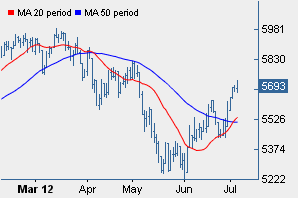Increasingly since the 1980's there has been a growth of public/private sector joint ventures. Mrs Thatcher popularised contracting out, NuLabour embraced it further and today there are a wide range of FTSE350 companies that have a significant stake in ensuring that they get their share of Government contracts. However, i
n this time of "austerity", there appear to be two viewpoints, one good, one bad, surrounding companies that rely on, or have a significant amount of their earnings from Government contracts, especially if you are looking to invest in them.
The bad, negative argument is based on the simple fact that Government is looking to cut back, there will be less contracts available, or increasingly less money in the pot and therefore the contracts available will not be so lucrative.
A good example of one company that was hit hard by a sudden change in Government policy and a cutback in funding available was green energy company
Eaga.
Eaga ran the Warm Front contract introduced by the previous Labour Government. It was a substantial part of their earnings and profits. When the new Con/Lib coalition took over, the Government decided to go in a different direction, Eaga's Warm Front contract was drastically reduced, earnings and profits downgraded, the share price collapsed. Eaga shareholders got some return when Carillion made a bid for the company and took it over. It's just possible that they overpaid, Carillion, despite doing reasonable business from Government contracts in the last few years has seen its share price fall as well.
The good, positive argument is based on the fact that while Government will be looking to cut back, substantial contracts will still be available and companies that have built a reputation in this sector will be at the front of the queue to get the business. Also, in some areas there might actually be more business available as Government departments look to outsource their work and save money as private sector companies in competition with each other will bid for the business.
Unfortunately, such a bidding process doesn't always work to the advantage of Government departments looking to save money. How often do we read of headlines of projects run by private sector companies for the Government that go over budget? And once that contract is signed, unless there is a decent penalty clause to stop it, the taxpayer will end up footing a higher bill anyway.
All of which brings us to
G4S and its Olympic staffing farce, which may well have lost it friends in high places. Questor in the Daily Telegraph argues;
The outsourcing group gets about 10pc of its revenues from UK pubic sector
contracts such as welfare-to-work programmes and prison service contracts.
This is a relatively small proportion of the overall group. However,
globally, government contracts accounted for 27pc of G4S's revenues in 2011.
As analysts pointed out yesterday, G4S management said that the
UK public sector was one of the more active parts of its bidding pipeline at
an investor day held in May. Tendering for contracts at major events may
also be a problem for the group – especially in the near term.
Hardly surprising then that the G4S share price has been in a bit of a freefall that would make an Olympic diver proud.
Whether that fall is overdone or not only time will tell, but there is a lesson here for investors to keep an eye on how much business a company does with the public sector. Market sentiment is largely negative and weary towards such companies at the moment because the downside is greater than the upside. Some companies are still doing well out of public sector business, but it won't necessarily be reflected just yet in share price performance. The market will probably need to be convinced that it can be maintained going forward. Trouble is, no one can be sure of the extent of the cuts to come and which FTSE companies will get hit.



















































